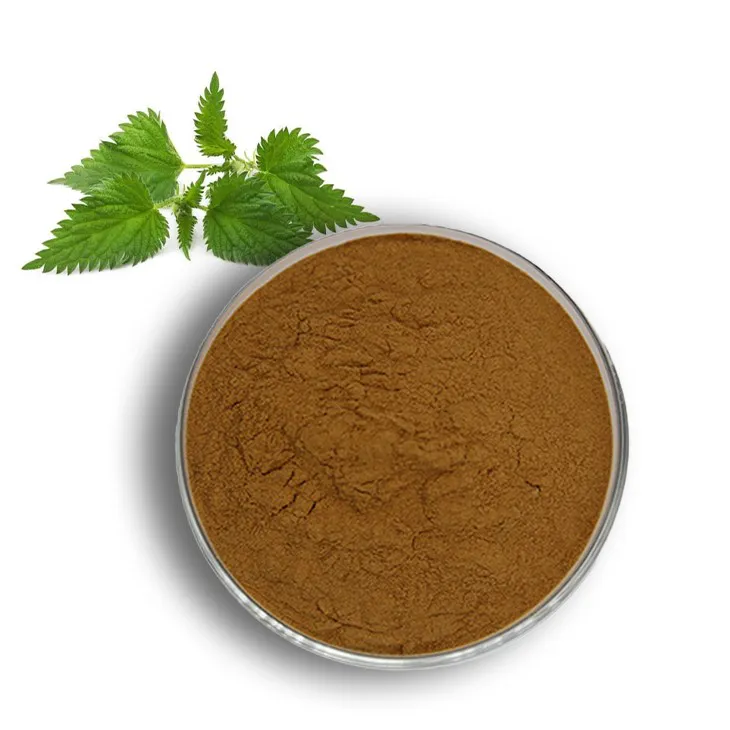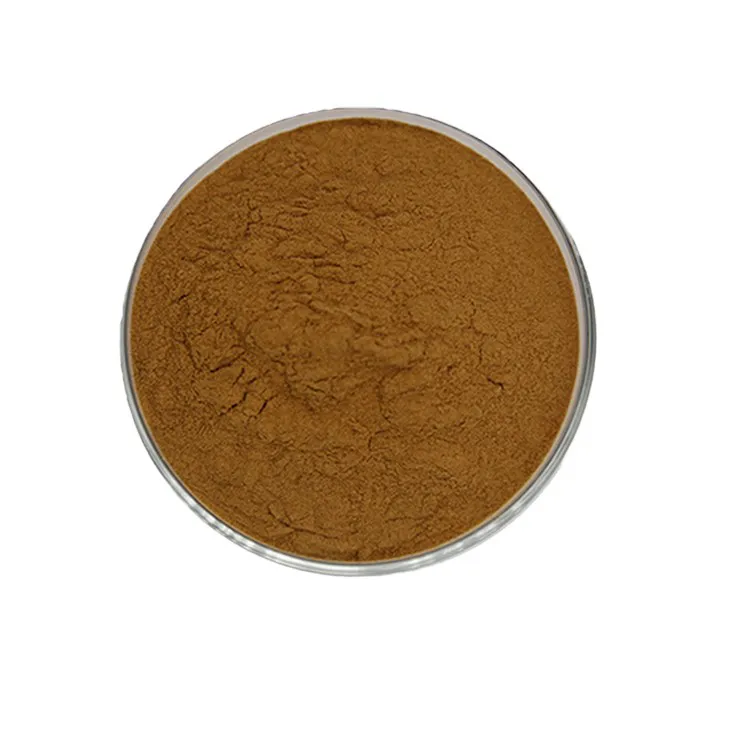- 0086-571-85302990
- sales@greenskybio.com
The process of extracting nettle root organic acids from nettle root extracts.
2024-11-29

1. Introduction
Nettle Root Extract has attracted significant attention in natural product research due to its potential health benefits, which are often attributed to the presence of organic acids. The extraction of these organic acids is a crucial step in isolating and studying their properties. However, it is a complex process that requires careful consideration of various factors.

2. Solvent Extraction
2.1 Principle
Solvent extraction is based on the principle of differential solubility. Organic acids in Nettle Root Extracts are soluble in certain solvents. Common solvents used include ethanol, methanol, and ethyl acetate. The Nettle Root Extract is mixed with the solvent, and the organic acids dissolve into the solvent phase.2.2 Procedure
- First, the nettle root is dried and ground into a fine powder. This increases the surface area, facilitating better extraction.
- The powdered nettle root is then mixed with the selected solvent in a suitable ratio. For example, a ratio of 1:10 (nettle root powder: solvent) might be used.
- The mixture is stirred continuously for a specific period, usually several hours to ensure complete extraction. The temperature during this process can also play a role. In some cases, mild heating (e.g., at 40 - 50°C) can enhance the extraction efficiency.
- After stirring, the mixture is filtered to separate the solid residue from the solvent - containing the dissolved organic acids.
2.3 Advantages
- It is a relatively simple and cost - effective method. Solvents like ethanol are readily available and inexpensive.
- Can be easily scaled up for large - scale production.
2.4 Limitations
- Some solvents may be toxic, and residual solvent in the final product can be a concern. For example, methanol is toxic, and complete removal of methanol residues is essential.
- The extraction selectivity may not be very high, resulting in the co - extraction of other unwanted components along with the organic acids.

3. Supercritical Fluid Extraction
3.1 Principle
Supercritical fluid extraction utilizes the properties of a supercritical fluid, which has the characteristics of both a gas and a liquid. Carbon dioxide is the most commonly used supercritical fluid in this process. At supercritical conditions (above its critical temperature and pressure), carbon dioxide can effectively dissolve the organic acids from the nettle root extract.3.2 Procedure
- The nettle root extract is placed in an extraction vessel. The system is then pressurized and heated to reach the supercritical state of carbon dioxide.
- The supercritical carbon dioxide is passed through the extract, dissolving the organic acids. The flow rate of carbon dioxide and the extraction time are important parameters to control.
- After extraction, the pressure is gradually reduced, and the carbon dioxide returns to its gaseous state, leaving behind the extracted organic acids.
3.3 Advantages
- It is a clean and environmentally friendly method as carbon dioxide is non - toxic and easily removed from the final product, leaving no harmful residues.
- High selectivity, which can specifically extract the organic acids with less co - extraction of other impurities.
3.4 Limitations
- The equipment required for supercritical fluid extraction is expensive, which limits its application in small - scale or low - budget research.
- Complex operation and strict control of temperature and pressure are necessary, which requires well - trained operators.

4. Purification of Nettle Root Organic Acids
4.1 Column Chromatography
- Column chromatography is a widely used method for purifying nettle root organic acids. A stationary phase (such as silica gel or alumina) is packed into a column.
- The crude extract containing the organic acids is loaded onto the top of the column. Different solvents or solvent mixtures are then used as the mobile phase to elute the components. The organic acids are separated based on their different affinities for the stationary and mobile phases.
4.2 Recrystallization
- This method is based on the difference in solubility of the organic acids at different temperatures. The crude organic acids are dissolved in a suitable solvent at a high temperature.
- As the solution cools down, the organic acids start to crystallize out, leaving behind the impurities in the solution. The crystals are then separated by filtration.

5. Factors Affecting the Extraction Process
5.1 Choice of Raw Materials
- The quality and origin of the nettle root can significantly affect the extraction of organic acids. Nettle roots from different regions may have different compositions due to variations in soil, climate, and cultivation methods.
- The maturity of the nettle root also plays a role. Generally, fully mature roots may contain a higher concentration of organic acids.
5.2 Extraction Time
- For solvent extraction, a longer extraction time may increase the yield of organic acids up to a certain point. However, after that, it may lead to the extraction of more unwanted components.
- In supercritical fluid extraction, the extraction time needs to be optimized to ensure efficient extraction while minimizing energy consumption and cost.
5.3 Extraction Temperature
- As mentioned earlier, in solvent extraction, mild heating can enhance the extraction efficiency. But too high a temperature may cause the degradation of the organic acids or the co - extraction of other heat - sensitive components.
- In supercritical fluid extraction, precise control of temperature is crucial as it directly affects the properties of the supercritical fluid and the extraction efficiency.
6. Conclusion
The extraction of nettle root organic acids from nettle root extracts is a multi - faceted process. Different extraction methods, such as solvent extraction and supercritical fluid extraction, each have their own advantages and limitations. Purification steps are also necessary to obtain high - purity organic acids. Moreover, factors like the choice of raw materials, extraction time, and temperature need to be carefully considered. Future research may focus on developing more efficient and cost - effective extraction methods, as well as improving the purification processes to meet the increasing demand for high - quality nettle root organic acids in various fields such as pharmaceuticals and cosmetics.
FAQ:
What are the main extraction methods for nettle root organic acids?
There are mainly solvent extraction and supercritical fluid extraction methods. Solvent extraction uses an appropriate solvent to dissolve the organic acids from the nettle root extract. Supercritical fluid extraction, on the other hand, utilizes a supercritical fluid, usually carbon dioxide, which has properties between a gas and a liquid. It can effectively extract the organic acids with relatively high selectivity and less solvent residue.
What are the advantages of solvent extraction for nettle root organic acids?
One advantage of solvent extraction is its simplicity. It is a relatively easy - to - implement method that has been widely used in the extraction of various natural products. It can be carried out using common laboratory equipment. Also, different solvents can be selected according to the solubility characteristics of the target organic acids, which allows for a certain degree of flexibility in the extraction process.
What are the limitations of supercritical fluid extraction in extracting nettle root organic acids?
The main limitation is the high cost associated with the equipment required for supercritical fluid extraction. The specialized apparatus for generating and maintaining supercritical conditions is expensive. Additionally, the process requires precise control of parameters such as pressure and temperature, and any deviation may affect the extraction efficiency and quality of the organic acids.
How important is the purification step in obtaining high - purity nettle root organic acids?
The purification step is extremely important. After the initial extraction, the obtained product may contain impurities such as other plant components, residual solvents, and by - products. Purification is necessary to remove these impurities to ensure the high - purity of the nettle root organic acids. High - purity organic acids are more suitable for further research, such as pharmacological studies, and can also meet the requirements of high - quality product development in the pharmaceutical and cosmetic industries.
How does the choice of raw materials affect the extraction of nettle root organic acids?
The quality and origin of the nettle root raw materials play a crucial role. Different growth environments, harvesting times, and storage conditions can lead to variations in the composition of the nettle root. For example, nettle roots grown in polluted areas may contain more contaminants, which can interfere with the extraction process and the quality of the final product. Also, the age of the nettle root at the time of harvest can affect the content and type of organic acids present.
Related literature
- Extraction and Characterization of Organic Acids from Nettle Root: A Comprehensive Review"
- "Optimization of Nettle Root Organic Acid Extraction: New Approaches and Findings"
- "The Role of Nettle Root Organic Acids in Natural Product Research: Extraction and Analysis"
- ▶ Hesperidin
- ▶ citrus bioflavonoids
- ▶ plant extract
- ▶ lycopene
- ▶ Diosmin
- ▶ Grape seed extract
- ▶ Sea buckthorn Juice Powder
- ▶ Beetroot powder
- ▶ Hops Extract
- ▶ Artichoke Extract
- ▶ Reishi mushroom extract
- ▶ Astaxanthin
- ▶ Green Tea Extract
- ▶ Curcumin Extract
- ▶ Horse Chestnut Extract
- ▶ Other Problems
- ▶ Boswellia Serrata Extract
- ▶ Resveratrol Extract
- ▶ Marigold Extract
- ▶ Grape Leaf Extract
- ▶ blog3
- ▶ blog4
- ▶ blog5
-
The best lemon juice powder in nature.
2024-11-29
-
Organic Vitamin K2 Powder Suppliers
2024-11-29
-
Bulk purchase of L - tyrosine.
2024-11-29
-
Vitamin K2 Manufacturers
2024-11-29
-
100% Pure Natural Rutin.
2024-11-29
-
Chinese Citrus Bioflavonoid Suppliers.
2024-11-29
-
Hops Extract
2024-11-29
-
Bayberry Extract
2024-11-29
-
Pomegranate Extract
2024-11-29
-
White Peony Extract
2024-11-29
-
Curcumin Extract
2024-11-29
-
Senna Leaf Extract
2024-11-29
-
Nutmeg Extract
2024-11-29
-
Golden Seal Extract
2024-11-29
-
Chasteberry Extract
2024-11-29
-
Green coffee bean Extract
2024-11-29





















